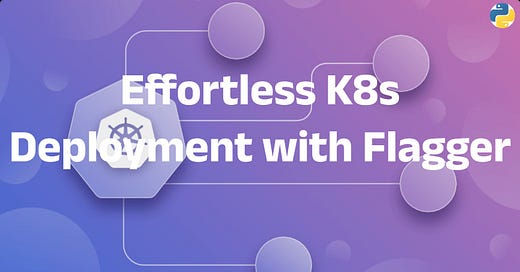K8s Automated Deployment with Flagger - Elegantly Effortless
Automate Kubernetes deployments with Flagger for zero-downtime canary releases. Eliminate manual monitoring and achieve safe, elegant CI/CD.
"Top Python Libraries" Publication 400 Subscriptions 20% Discount Offer Link.
Friend, hold on before you scroll down. Let's chat about a scenario first.
Midnight, twelve o'clock. The conference room is filled with smoke (or maybe it's steam from coffee). You and a few buddies are staring intently at the monitoring screens. As your trembling hand types kubectl apply, the entire team's breathing seems to pause. You silently pray: "Please, ancestors, don't let anything go wrong..."
Suddenly, the DingTalk group starts "ding-ding-dinging" with glaring red alerts. The CPU curve on the screen shoots skyward like a rocket, and the number of 500 errors begins climbing frantically.
"Quick! Roll back to V1!"
After a frantic scramble, the world temporarily returns to calm. But we both know this is just "halftime." What follows is an all-nighter of log investigation, a humble incident report, and tomorrow's scalp-tingling post-mortem meeting.
Does this scene feel familiar to you?
I used to think this was just our fate as programmers. Every release was a gamble. We bet there were no hidden landmines in the code, bet that the test environment and production environment were "cosmically aligned." Later, I realized we weren't gambling on luck, but on methodology. What we lacked wasn't more careful code reviews, but a more scientific, more elegant deployment philosophy.




